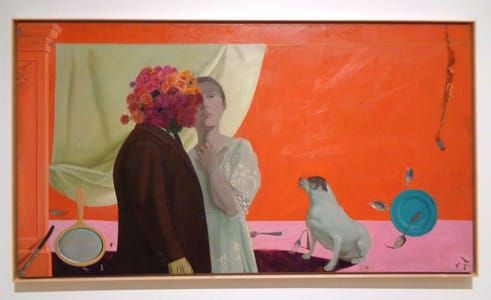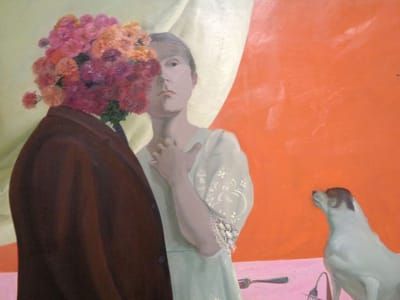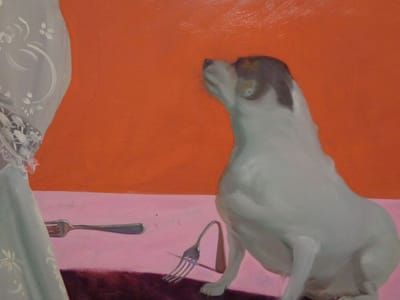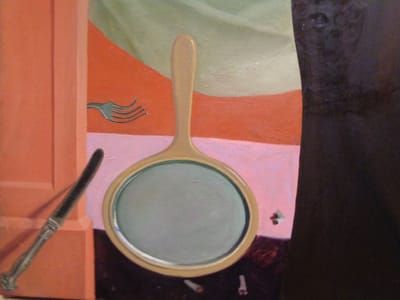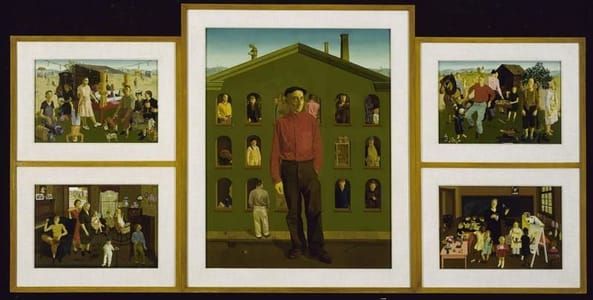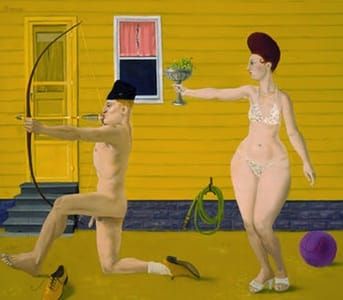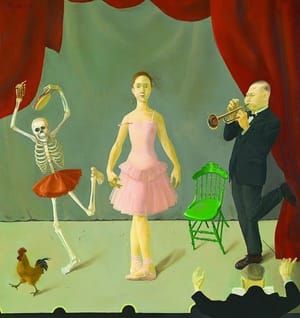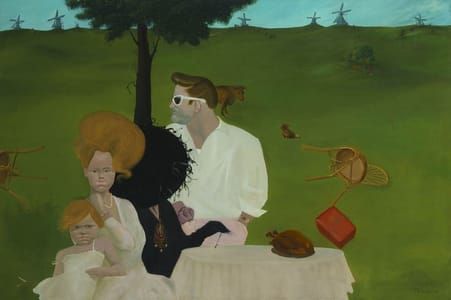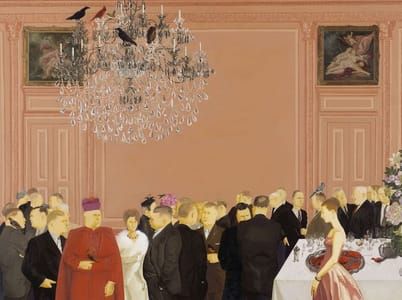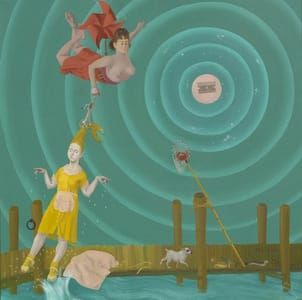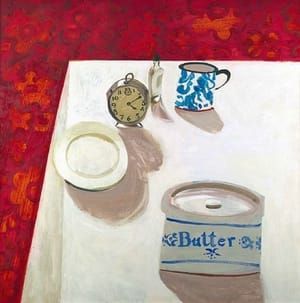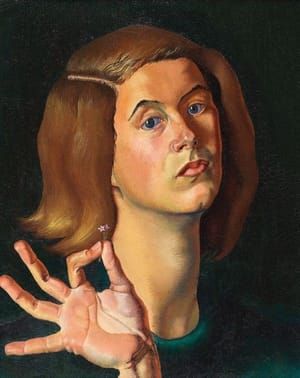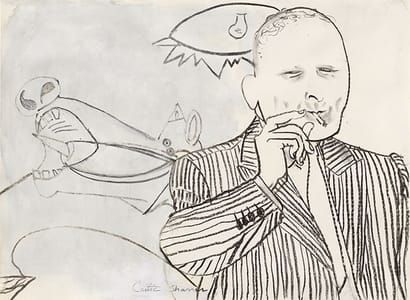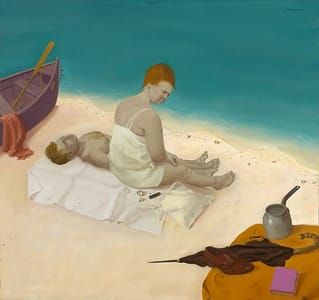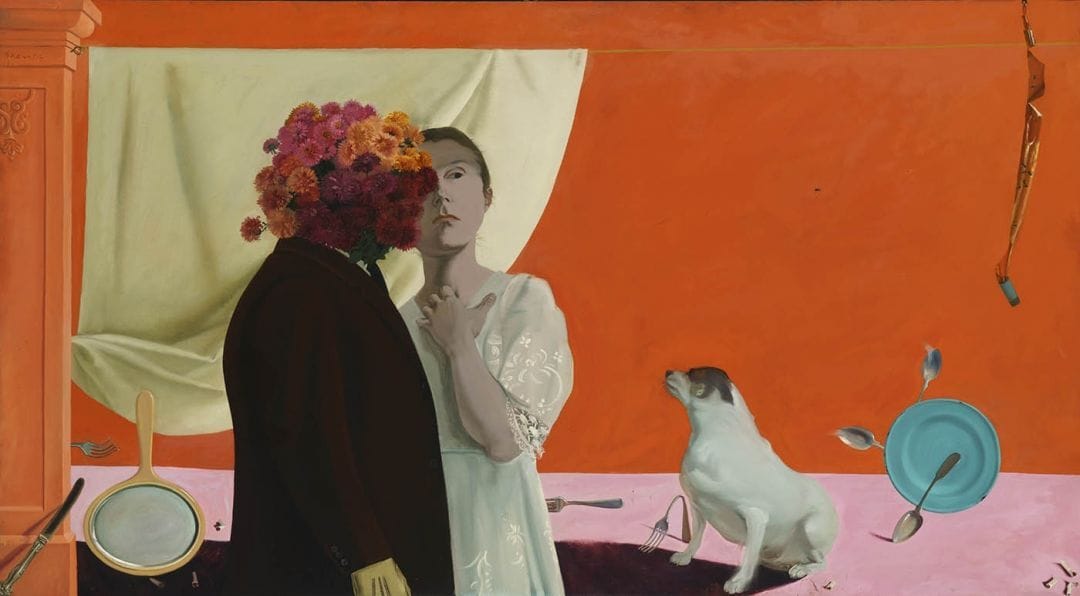

Nursery Rhyme, 1971
Honoré Sharrer
In paintings such as Nursery Rhyme, Sharrer incorporated rather surreal imagery from a classic Mother Goose nursery rhyme. Tableware has come to life, and the dish has not only spoons, but forks, and a knife to accompany its getaway. Animated and humorous, the pieces of tableware behave like sidekicks to the women in her paintings. And, just like her women, Sharrer’s forks and spoons often step out of their role as objects.
[https://www.columbusmuseum.org/women-artists-who-changed-the-art-world-honore-sharrer/]
...her unwavering commitment to meticulous representation serves as the thread that ties the whole collection together. There can be no doubt that Sharrer was a voracious fan of painting. Her works contain paintings within paintings, and borrow stylistically and thematically from the Northern Renaissance to Surrealism to Pop.
Further, her works are so infused with sly and subtle painting references, that once you start noticing them, they pop up everywhere. Look in the upper right corner of Workers and Paintings, and you’ll find a New England church steeple that could have come straight out of a Grant Wood painting. And that gravity-defying knife in the lower lefthand corner of Nursery Rhyme? Browse through images of classic still life paintings and note how many knives you see balanced precariously over the edge of a table. It’s a thing. So are the pitchers, vessels, shellfish, fruit and flies. Sharrer was a painter’s painter in every way imaginable, skilled both in the vocabulary of painting and in execution.
[http://www.columbusunderground.com/a-dangerous-woman-subversion-and-surrealism-in-the-art-of-honore-sharrer-jr1]
Uploaded on Dec 15, 2017 by Suzan Hamer
Honoré Sharrer
artistArthur
Wait what?

